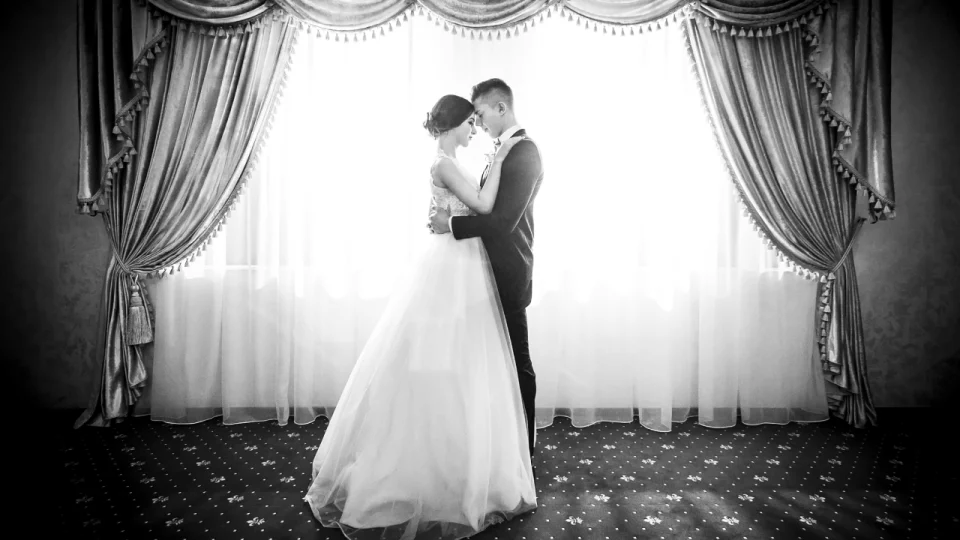A wedding day is one of the most memorable occasions in a man’s life, and how you dress will play a significant role in how you feel and how you’re remembered. Unlike everyday or even formal business attire, choosing your wedding outfit involves deeper consideration—balancing formality, personal style, and comfort.
This guide will help you navigate through the options and nuances of dressing for your big day, ensuring you strike the perfect balance between tradition, elegance, and individuality.
Table of Contents
Understanding the Dress Code and Theme
Before selecting your attire, it’s essential to understand the wedding theme and dress code. Typically, these are specified on the invitation and can vary widely—from formal black tie to a more relaxed casual theme. For a black-tie wedding, a classic black tuxedo paired with a black bow tie and a crisp white dress shirt is essential. Think James Bond sophistication: polished black patent leather shoes, a cummerbund or a formal vest, and perhaps a pocket square to add a dash of personality. For a white-tie affair, you’ll need to elevate your game with a tailcoat, white waistcoat, white bow tie, and impeccably polished shoes. These occasions call for timeless elegance and attention to every detail, including shirt studs and cufflinks.
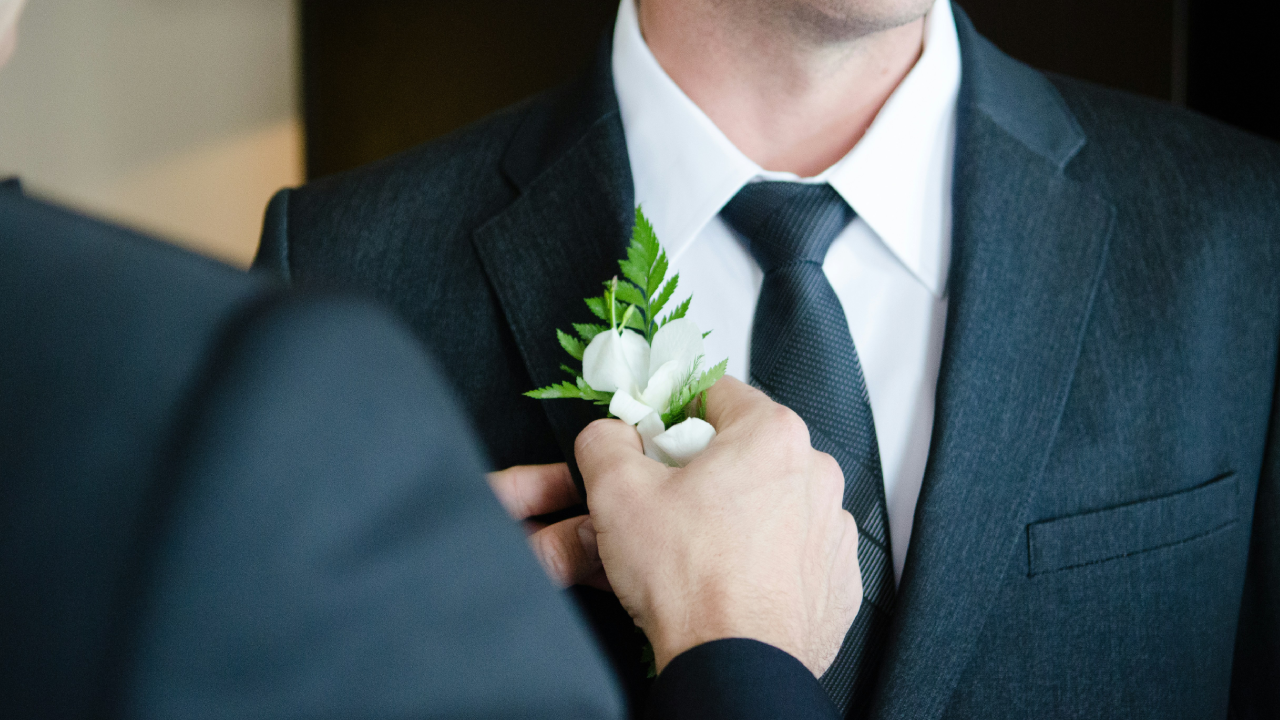
Semi-formal weddings allow more flexibility. A dark suit, perhaps in navy or charcoal, coupled with a dress shirt and tie, will typically suffice. Here, you have room to play with subtle patterns or textures in your tie or socks—adding just enough flair without overshadowing the formality of the event. Casual weddings open up even more possibilities. Depending on the location and time of day, you might opt for a tailored blazer with trousers or chinos, paired with a sharp dress shirt or even a polo. Loafers or dress shoes with a bit more character are a good choice in these settings.
Choosing the Right Suit or Tuxedo
Once you understand the dress code, the next step is choosing the right suit or tuxedo. Here are a few factors to consider:
Fit is Everything
A well-fitted suit can make or break your wedding day look. Whether you’re choosing a tuxedo or a suit, make sure it’s tailored to your body. The jacket should hug your shoulders, the sleeves should end just above your wrist bone, and the pants should have a slight break over your shoes. Consider visiting a reputable tailor for adjustments if you’re buying off-the-rack.
Fabric Matters
The fabric of your suit or tuxedo is crucial, especially considering the season. For summer weddings, lightweight fabrics like linen, cotton, or seersucker are ideal as they are breathable. For winter weddings, opt for heavier fabrics like wool, velvet, or tweed to keep warm while maintaining a stylish appearance.
Color Choices
While black and navy are classic choices, modern grooms are experimenting with colors like charcoal, burgundy, and even forest green. Your color choice should complement the wedding theme and your bride’s attire. Light grey or beige suits can also work beautifully for daytime or beach weddings.
The Perfect Shirt: An Essential Element
The shirt is an essential piece that complements your suit or tuxedo. A crisp, white dress shirt is always a safe and stylish choice that pairs well with any color or style of suit. If you want to add a subtle pop of color, consider a light blue or pastel shade, particularly for a semi-formal or daytime wedding. The fabric should be of high quality, such as 100% cotton, for comfort and breathability.
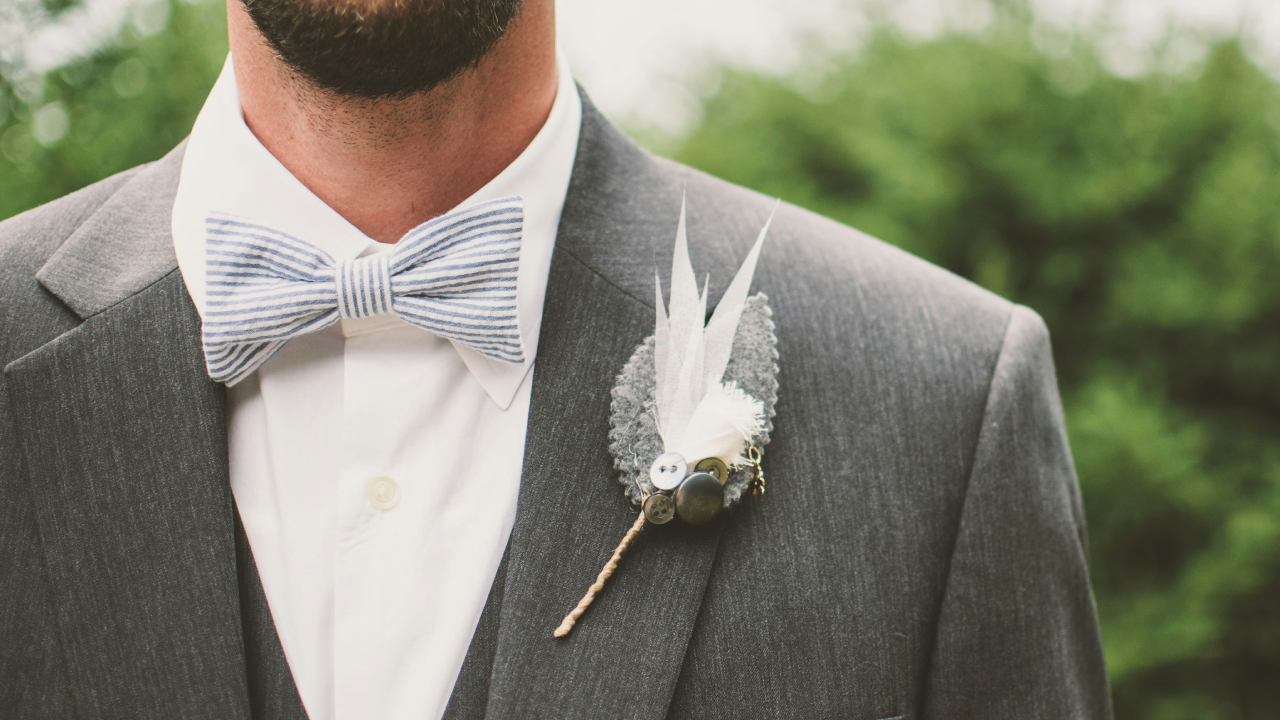
Pay attention to the collar style, as it can significantly influence your overall look. A spread collar works well with a wider tie knot, like a Windsor, while a pointed collar is more traditional and versatile. For tuxedos, a wingtip collar offers the most formal and distinguished appearance. Cuffs also matter—French cuffs paired with elegant cufflinks add a refined touch suitable for formal weddings, while button cuffs can offer a more understated appearance for less formal settings.
Adding Character with Accessories
Accessories are the finishing touches that can elevate your wedding day attire from good to exceptional. Ties and bow ties are a starting point. A black silk bow tie is the classic choice for black-tie events, while for semi-formal or casual weddings, you might opt for a tie with a subtle pattern or a bow tie in a complementary color to add a touch of personality.
A pocket square is another small but impactful detail. For a sophisticated and understated look, go for a white pocket square in a classic fold. If you’re feeling more adventurous, a pocket square with a splash of color or pattern can add depth and character to your suit. Boutonnières, the small floral arrangements worn on the lapel, often match the bride’s bouquet and are a traditional way to incorporate the wedding theme into your look.
Cufflinks are a classic way to add elegance and personalization. Whether you opt for simple silver or gold designs or something more unique with your initials, cufflinks are a small detail that makes a big impression. A well-chosen watch, ideally with a leather strap for a more formal look or a classic metal band for a timeless appeal, completes the ensemble.
Choosing the Right Footwear
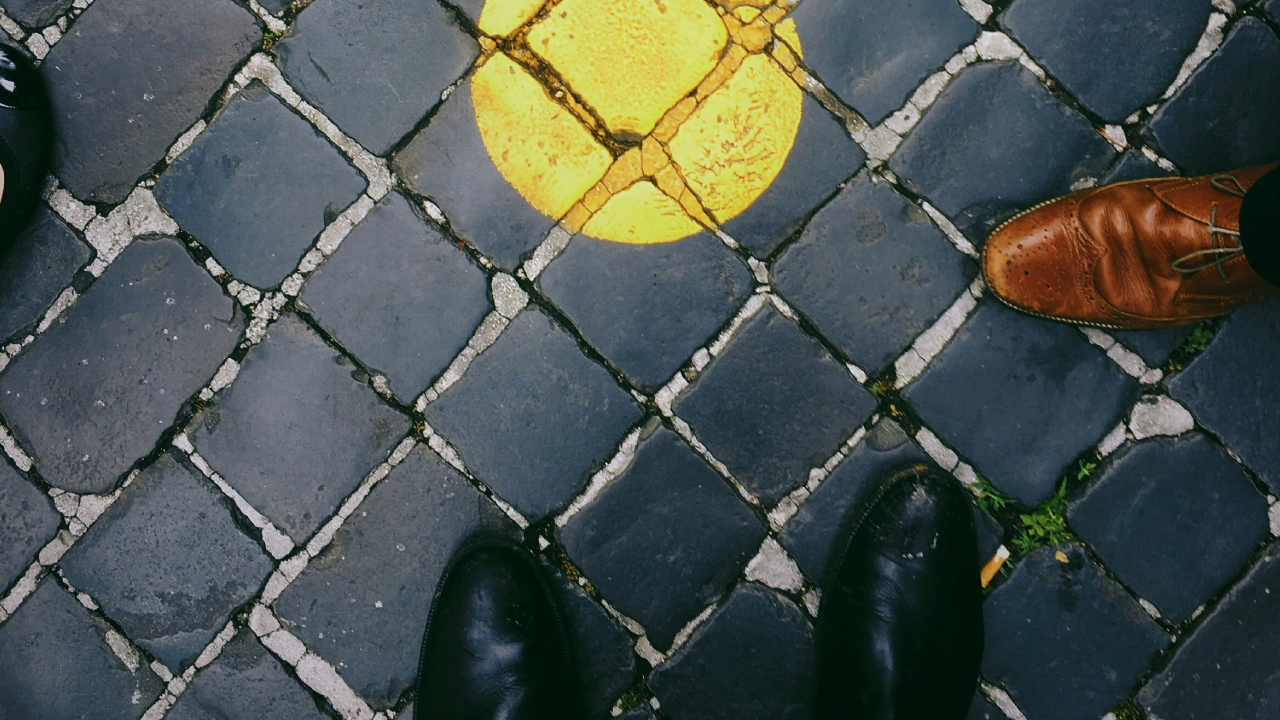
Your choice of footwear should complement your suit or tuxedo. Here’s a guide to selecting the perfect shoes for your wedding day:
- Oxford Shoes: The classic Oxford shoe is the go-to choice for formal weddings. It pairs well with both suits and tuxedos and comes in various colors like black, brown, and oxblood.
- Loafers: Loafers are a stylish option for semi-formal or casual weddings. They are comfortable and add a contemporary touch to your look.
- Derby Shoes: Derby shoes are less formal than Oxfords but still appropriate for semi-formal weddings. They offer a slightly wider fit and can be more comfortable.
Grooming and Personal Care
Your attire is only one part of the equation; grooming is equally important. A week before the wedding is a good time to get a fresh haircut, giving it just enough time to settle in and look natural. Whether you opt for a clean shave or a well-maintained beard, make sure it suits your style and is impeccably groomed.
Skincare should not be overlooked, especially since weddings are usually long days filled with photographs. Starting a skincare routine at least a month in advance—cleansing, moisturizing, and perhaps even exfoliating—can ensure your skin looks its best. Choosing a subtle, sophisticated fragrance is another often overlooked detail. The right scent can leave a lasting impression, but be mindful not to overdo it; a light application is more than enough.
Consider the Venue and Season
Your attire should also be influenced by the wedding venue and the season. For beach weddings, lighter fabrics like linen or cotton in softer colors can provide comfort while still looking stylish. Pair these with loafers or slip-on shoes that are more practical for sandy environments. Winter weddings, conversely, allow for heavier, richer fabrics like wool or velvet. Darker suits or tuxedos not only keep you warm but also exude a classic, elegant look that suits the season’s ambiance.
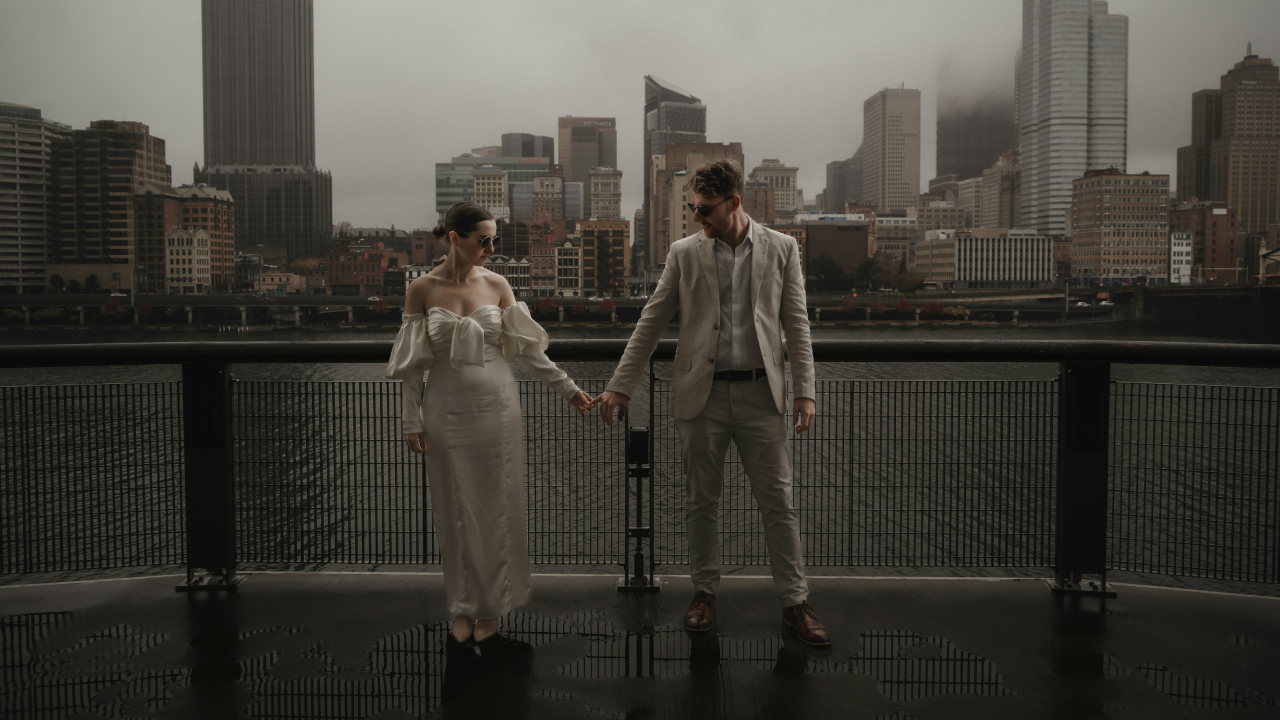
Outdoor weddings demand versatility. The ground could be uneven, and the weather unpredictable, so ensure your shoes are appropriate and your fabrics breathable. A stylish hat or sunglasses might also serve as both a fashion statement and a practical necessity.
Check also What To Wear To The Beach Wedding This Summer
Coordinating with the Bride
While your wedding attire should express your style, it should also harmonize with what the bride is wearing. This doesn’t necessarily mean matching colors exactly, but coordinating to create a cohesive visual aesthetic. If the bride is wearing a vintage gown, you might opt for a classic, timeless suit. If her dress is modern and sleek, a contemporary, slim-fit suit could complement well.
Final Fitting and Rehearsal
Don’t underestimate the importance of a final fitting or dress rehearsal. Scheduling this a few weeks before the wedding ensures everything fits perfectly and gives you the opportunity to get comfortable in your attire. Practice walking, sitting, and dancing in your outfit to ensure you’ll feel as good as you look.
Confidence: Your Best Accessory
Above all, the most important aspect of your wedding attire is confidence. No matter how much you spend or how well everything fits, it’s how you carry yourself that will leave a lasting impression. Remember, this is your day as much as anyone else’s, and your attire should reflect not just the event’s formality but also your unique personality.
